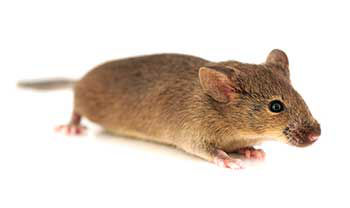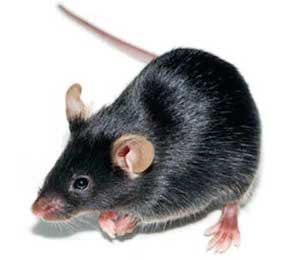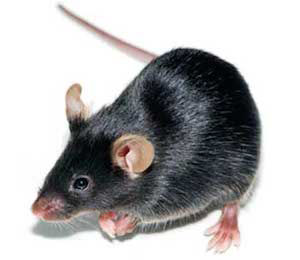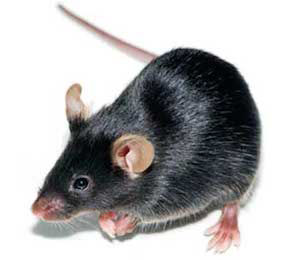Application Areas:
APPSWE-Tau

| Model No. | Nomenclature | Genotype |
|---|---|---|
| 2469-F | STOCK Tg(APPSWE)2576Kha Tg(Prnp-MAPT*P301L)JNPL3Hlmc | tg/wt;tg/wt |
| 2469-M | STOCK Tg(APPSWE)2576Kha Tg(Prnp-MAPT*P301L)JNPL3Hlmc | tg/wt;tg/wt |
| 2469-F | STOCK Tg(APPSWE)2576Kha Tg(Prnp-MAPT*P301L)JNPL3Hlmc | wt/wt;tg/wt |
| 2469-M | STOCK Tg(APPSWE)2576Kha Tg(Prnp-MAPT*P301L)JNPL3Hlmc | wt/wt;tg/wt |
| 2469-RD1-F | STOCK Tg(APPSWE)2576Kha Tg(Prnp-MAPT*P301L)JNPL3Hlmc | tg/wt;tg/wt |
| 2469-RD1-M | STOCK Tg(APPSWE)2576Kha Tg(Prnp-MAPT*P301L)JNPL3Hlmc | tg/wt;tg/wt |
| 2469-RD1-F | STOCK Tg(APPSWE)2576Kha Tg(Prnp-MAPT*P301L)JNPL3Hlmc | wt/wt;tg/wt |
| 2469-RD1-M | STOCK Tg(APPSWE)2576Kha Tg(Prnp-MAPT*P301L)JNPL3Hlmc | wt/wt;tg/wt |
- Description
- Related Products & Services
- Price & Licensing
- Overview
- Genetics
- Guides & Publications
- Applications & Therapeutic Areas
- Transit, Housing & Welfare
- Diet
Overview
Nomenclature: STOCK Tg(APPSWE)2576Kha Tg(Prnp-MAPT*P301L)JNPL3Hlmc
- Carries the transgene coding for the 695-amino acid isoform of human Alzheimer β-amyloid (Aβ) protein in addition to the transgene for the human P301L mutation of the microtubule-associated protein tau gene (MAPT)
- Amyloid plaque distribution, number, morphology and density is similar between APPSWE-Tau mice and APPSWE mice
- Motor disturbances and morphology of neurofibrillary tangles (NFT) is comparable between the APPSWE-Tau and Tau mice, although older female APPSWE-Tau mice have a marked increase in limbic areas compared to Tau females
- Useful for the study of Alzheimer's Disease that address both the formation of β-amyloid plaques and NFT and to study drugs for treatment or prevention of Alzheimer's disease
- The 2469 Hemizygous / Hemizygous mice are hemizygous for the APPSWE mutation and hemizygous for the Tau mutation.
- The 2469 Wild Type / Hemizygous mice are wild type for the APP mutation and hemizygous for the Tau mutation and serve as one control for the 2469 Hemizygous / Hemizygous model.
- Pink eyed animals, associated with certain coat colors, and the Pde6brd1 retinal degeneration mutation can cause light sensitivity and/or blindness in some animals. This may impact the results of behavioral testing. Upon request, animals can be screened for eye color, coat color, and/or rd1 homozygosity for an additional fee.
- Rd1 tested mice (2469-RD1-F and 2469-RD1-M) are wild type or heterozygous for the Pde6brd1 mutation. Genotype shown in the table above refers to the APPSWE and Tau transgenes.
Orders by weight: Taconic cannot accept orders by weight for this model. Please note that shipments may contain animals with a larger weight variation.
Recommended Controls
Please contact scisupport@taconic.com for help determining the appropriate controls.
Origin
Genetics
Guides & Publications
Initial Publication: Lewis J, Dickson DW, Lin W-L, Chisholm L, Corral A, Jones G, Yen S-H, Sahara N, Skipper L, Yager D, Eckman C, Hardy J, Hutton M, McGowan E. (2001) Enhanced Neurofibrillary Degeneration in Transgenic Mice Expressing Mutant Tau and App, Science, 293(5534):1487 – 1491.
Applications & Therapeutic Areas
- "Alzheimers Disease"
- Genetically Humanized
- Neuroscience
Transit, Housing & Welfare
Need more info? Click the live chat button or Contact Us
tg/wt;tg/wt 2469 male mice are packed one per TTC section, with a maximum of 4 mice per TTC. wt/wt;tg/wt 2469 mice are packed as cagemates, one cage per Taconic Transit Cage (TTC). Customers should take care recombining 2469 males from different TTCs or TTC sections into the same cage at or after unpacking.
Packing Practices
Taconic standard practice is to recombine animals of different home cages and/or ages from a single model and sex during packing, except in specific cases where Taconic's animal welfare policy prohibits recombination due to aggression or other concerns. When an order is fulfilled with animals from more than one week of birth, this standard practice results in animals from a range of birth weeks packed together in a single TTC. When an order is fulfilled with animals from genotyped models, this standard practice results in animals from different home cages packed together in a single TTC.
Customers who wish to keep animals from different weeks of birth separated should place orders with the special instruction "Divide and label by age." Note that this special request can result in increased costs for additional Taconic Transit Cages, dividers and/or freight charges.
Taconic discourages other types of custom packing requests as they can have a negative impact on animal welfare. Learn more.
Diet
- Services
- Licensing
- Pricing - USD
- Pricing - EUR
- Pricing - DKK
- Pricing - USD Nonprofit
- Pricing - EUR Nonprofit
- Pricing - DKK Nonprofit
- Select my Health Standard
- Get Custom Pricing Guide
APPSWE-Tau
Conditions of Use for Taconic Transgenic Models™
Taconic Transgenic Models™ (Models) are produced and distributed under rights to patents and intellectual property licensed from various institutions. Taconic sells the Models to purchasers, grants to each purchaser a right under Taconic's rights in such licensed patents and intellectual property to use the purchased Model in consideration of purchasers' acknowledgement of and agreement to the Terms and Conditions for Taconic Models, Products and Services and the following terms of use:
- Title to these Models and biological materials derived from them remains with Taconic.
- The Models will be used for research purposes only.
- The Models will not be bred or cross-bred except to obtain embryos or fetuses required for research purposes unless additional rights have been granted in writing by Taconic.
- The Models and biological materials derived from them will not be distributed to third parties or used for commercial purposes.
- Non-profit purchasers may not use this Model and/or biological materials derived from it in sponsored research or contract research studies unless it is purchased at the for-profit price.
Pricing - USD
Murine Pathogen Free (MPF) Health Standard
2469 Female
2469-F Genotype tg/wt;tg/wt
Cohorts are reserved upon order placement and will take 4-8 weeks to fulfill. An estimated lead time will be provided to you within 2-3 business days.
| Age in Weeks | Quantity 1 - 999 |
|---|---|
| 4 to 10 | US$1,003.00 |
2469-F Genotype wt/wt;tg/wt
Cohorts are reserved upon order placement and will take 4-8 weeks to fulfill. An estimated lead time will be provided to you within 2-3 business days.
| Age in Weeks | Quantity 1 - 999 |
|---|---|
| 4 to 10 | US$1,003.00 |
2469-RD1-F Genotype tg/wt;tg/wt.
Cohorts are reserved upon order placement and will take 4-8 weeks to fulfill. An estimated lead time will be provided to you within 2-3 business days.
| Age in Weeks | Quantity 1 - 999 |
|---|---|
| 4 to 10 | US$1,082.00 |
2469-RD1-F Genotype wt/wt;tg/wt.
Cohorts are reserved upon order placement and will take 4-8 weeks to fulfill. An estimated lead time will be provided to you within 2-3 business days.
| Age in Weeks | Quantity 1 - 999 |
|---|---|
| 4 to 10 | US$1,082.00 |
2469 Male
2469-M Genotype tg/wt;tg/wt
Cohorts are reserved upon order placement and will take 4-8 weeks to fulfill. An estimated lead time will be provided to you within 2-3 business days.
| Age in Weeks | Quantity 1 - 999 |
|---|---|
| 4 to 10 | US$1,003.00 |
2469-M Genotype wt/wt;tg/wt
Cohorts are reserved upon order placement and will take 4-8 weeks to fulfill. An estimated lead time will be provided to you within 2-3 business days.
| Age in Weeks | Quantity 1 - 999 |
|---|---|
| 4 to 10 | US$1,003.00 |
2469-RD1-M Genotype tg/wt;tg/wt.
Cohorts are reserved upon order placement and will take 4-8 weeks to fulfill. An estimated lead time will be provided to you within 2-3 business days.
| Age in Weeks | Quantity 1 - 999 |
|---|---|
| 4 to 10 | US$1,082.00 |
2469-RD1-M Genotype wt/wt;tg/wt.
Cohorts are reserved upon order placement and will take 4-8 weeks to fulfill. An estimated lead time will be provided to you within 2-3 business days.
| Age in Weeks | Quantity 1 - 999 |
|---|---|
| 4 to 10 | US$1,082.00 |
Pricing - EUR
Murine Pathogen Free (MPF) Health Standard
2469 Female
2469-F Genotype tg/wt;tg/wt
Cohorts are reserved upon order placement and will take 4-8 weeks to fulfill. An estimated lead time will be provided to you within 2-3 business days.
| Age in Weeks | Quantity 1 - 999 |
|---|---|
| 4 to 10 | 913,00 € |
2469-F Genotype wt/wt;tg/wt
Cohorts are reserved upon order placement and will take 4-8 weeks to fulfill. An estimated lead time will be provided to you within 2-3 business days.
| Age in Weeks | Quantity 1 - 999 |
|---|---|
| 4 to 10 | 913,00 € |
2469-RD1-F Genotype tg/wt;tg/wt.
Cohorts are reserved upon order placement and will take 4-8 weeks to fulfill. An estimated lead time will be provided to you within 2-3 business days.
| Age in Weeks | Quantity 1 - 999 |
|---|---|
| 4 to 10 | 985,00 € |
2469-RD1-F Genotype wt/wt;tg/wt.
Cohorts are reserved upon order placement and will take 4-8 weeks to fulfill. An estimated lead time will be provided to you within 2-3 business days.
| Age in Weeks | Quantity 1 - 999 |
|---|---|
| 4 to 10 | 985,00 € |
2469 Male
2469-M Genotype tg/wt;tg/wt
Cohorts are reserved upon order placement and will take 4-8 weeks to fulfill. An estimated lead time will be provided to you within 2-3 business days.
| Age in Weeks | Quantity 1 - 999 |
|---|---|
| 4 to 10 | 913,00 € |
2469-M Genotype wt/wt;tg/wt
Cohorts are reserved upon order placement and will take 4-8 weeks to fulfill. An estimated lead time will be provided to you within 2-3 business days.
| Age in Weeks | Quantity 1 - 999 |
|---|---|
| 4 to 10 | 913,00 € |
2469-RD1-M Genotype tg/wt;tg/wt.
Cohorts are reserved upon order placement and will take 4-8 weeks to fulfill. An estimated lead time will be provided to you within 2-3 business days.
| Age in Weeks | Quantity 1 - 999 |
|---|---|
| 4 to 10 | 985,00 € |
2469-RD1-M Genotype wt/wt;tg/wt.
Cohorts are reserved upon order placement and will take 4-8 weeks to fulfill. An estimated lead time will be provided to you within 2-3 business days.
| Age in Weeks | Quantity 1 - 999 |
|---|---|
| 4 to 10 | 985,00 € |
Pricing - DKK
Murine Pathogen Free (MPF) Health Standard
2469 Female
2469-F Genotype tg/wt;tg/wt
Cohorts are reserved upon order placement and will take 4-8 weeks to fulfill. An estimated lead time will be provided to you within 2-3 business days.
| Age in Weeks | Quantity 1 - 999 |
|---|---|
| 4 to 10 | kr.6.795,00 |
2469-F Genotype wt/wt;tg/wt
Cohorts are reserved upon order placement and will take 4-8 weeks to fulfill. An estimated lead time will be provided to you within 2-3 business days.
| Age in Weeks | Quantity 1 - 999 |
|---|---|
| 4 to 10 | kr.6.795,00 |
2469-RD1-F Genotype tg/wt;tg/wt.
Cohorts are reserved upon order placement and will take 4-8 weeks to fulfill. An estimated lead time will be provided to you within 2-3 business days.
| Age in Weeks | Quantity 1 - 999 |
|---|---|
| 4 to 10 | kr.7.329,00 |
2469-RD1-F Genotype wt/wt;tg/wt.
Cohorts are reserved upon order placement and will take 4-8 weeks to fulfill. An estimated lead time will be provided to you within 2-3 business days.
| Age in Weeks | Quantity 1 - 999 |
|---|---|
| 4 to 10 | kr.7.329,00 |
2469 Male
2469-M Genotype tg/wt;tg/wt
Cohorts are reserved upon order placement and will take 4-8 weeks to fulfill. An estimated lead time will be provided to you within 2-3 business days.
| Age in Weeks | Quantity 1 - 999 |
|---|---|
| 4 to 10 | kr.6.795,00 |
2469-M Genotype wt/wt;tg/wt
Cohorts are reserved upon order placement and will take 4-8 weeks to fulfill. An estimated lead time will be provided to you within 2-3 business days.
| Age in Weeks | Quantity 1 - 999 |
|---|---|
| 4 to 10 | kr.6.795,00 |
2469-RD1-M Genotype tg/wt;tg/wt.
Cohorts are reserved upon order placement and will take 4-8 weeks to fulfill. An estimated lead time will be provided to you within 2-3 business days.
| Age in Weeks | Quantity 1 - 999 |
|---|---|
| 4 to 10 | kr.7.329,00 |
2469-RD1-M Genotype wt/wt;tg/wt.
Cohorts are reserved upon order placement and will take 4-8 weeks to fulfill. An estimated lead time will be provided to you within 2-3 business days.
| Age in Weeks | Quantity 1 - 999 |
|---|---|
| 4 to 10 | kr.7.329,00 |
Pricing - USD Nonprofit
Murine Pathogen Free (MPF) Health Standard
2469 Female
2469-F Genotype tg/wt;tg/wt
Cohorts are reserved upon order placement and will take 4-8 weeks to fulfill. An estimated lead time will be provided to you within 2-3 business days.
| Age in Weeks | Quantity 1 - 999 |
|---|---|
| 4 to 10 | US$1,003.00 |
2469-F Genotype wt/wt;tg/wt
Cohorts are reserved upon order placement and will take 4-8 weeks to fulfill. An estimated lead time will be provided to you within 2-3 business days.
| Age in Weeks | Quantity 1 - 999 |
|---|---|
| 4 to 10 | US$1,003.00 |
2469-RD1-F Genotype tg/wt;tg/wt.
Cohorts are reserved upon order placement and will take 4-8 weeks to fulfill. An estimated lead time will be provided to you within 2-3 business days.
| Age in Weeks | Quantity 1 - 999 |
|---|---|
| 4 to 10 | US$1,082.00 |
2469-RD1-F Genotype wt/wt;tg/wt.
Cohorts are reserved upon order placement and will take 4-8 weeks to fulfill. An estimated lead time will be provided to you within 2-3 business days.
| Age in Weeks | Quantity 1 - 999 |
|---|---|
| 4 to 10 | US$1,082.00 |
2469 Male
2469-M Genotype tg/wt;tg/wt
Cohorts are reserved upon order placement and will take 4-8 weeks to fulfill. An estimated lead time will be provided to you within 2-3 business days.
| Age in Weeks | Quantity 1 - 999 |
|---|---|
| 4 to 10 | US$1,003.00 |
2469-M Genotype wt/wt;tg/wt
Cohorts are reserved upon order placement and will take 4-8 weeks to fulfill. An estimated lead time will be provided to you within 2-3 business days.
| Age in Weeks | Quantity 1 - 999 |
|---|---|
| 4 to 10 | US$1,003.00 |
2469-RD1-M Genotype tg/wt;tg/wt.
Cohorts are reserved upon order placement and will take 4-8 weeks to fulfill. An estimated lead time will be provided to you within 2-3 business days.
| Age in Weeks | Quantity 1 - 999 |
|---|---|
| 4 to 10 | US$1,082.00 |
2469-RD1-M Genotype wt/wt;tg/wt.
Cohorts are reserved upon order placement and will take 4-8 weeks to fulfill. An estimated lead time will be provided to you within 2-3 business days.
| Age in Weeks | Quantity 1 - 999 |
|---|---|
| 4 to 10 | US$1,082.00 |
Pricing - EUR Nonprofit
Murine Pathogen Free (MPF) Health Standard
2469 Female
2469-F Genotype tg/wt;tg/wt
Cohorts are reserved upon order placement and will take 4-8 weeks to fulfill. An estimated lead time will be provided to you within 2-3 business days.
| Age in Weeks | Quantity 1 - 999 |
|---|---|
| 4 to 10 | 913,00 € |
2469-F Genotype wt/wt;tg/wt
Cohorts are reserved upon order placement and will take 4-8 weeks to fulfill. An estimated lead time will be provided to you within 2-3 business days.
| Age in Weeks | Quantity 1 - 999 |
|---|---|
| 4 to 10 | 913,00 € |
2469-RD1-F Genotype tg/wt;tg/wt.
Cohorts are reserved upon order placement and will take 4-8 weeks to fulfill. An estimated lead time will be provided to you within 2-3 business days.
| Age in Weeks | Quantity 1 - 999 |
|---|---|
| 4 to 10 | 985,00 € |
2469-RD1-F Genotype wt/wt;tg/wt.
Cohorts are reserved upon order placement and will take 4-8 weeks to fulfill. An estimated lead time will be provided to you within 2-3 business days.
| Age in Weeks | Quantity 1 - 999 |
|---|---|
| 4 to 10 | 985,00 € |
2469 Male
2469-M Genotype tg/wt;tg/wt
Cohorts are reserved upon order placement and will take 4-8 weeks to fulfill. An estimated lead time will be provided to you within 2-3 business days.
| Age in Weeks | Quantity 1 - 999 |
|---|---|
| 4 to 10 | 913,00 € |
2469-M Genotype wt/wt;tg/wt
Cohorts are reserved upon order placement and will take 4-8 weeks to fulfill. An estimated lead time will be provided to you within 2-3 business days.
| Age in Weeks | Quantity 1 - 999 |
|---|---|
| 4 to 10 | 913,00 € |
2469-RD1-M Genotype tg/wt;tg/wt.
Cohorts are reserved upon order placement and will take 4-8 weeks to fulfill. An estimated lead time will be provided to you within 2-3 business days.
| Age in Weeks | Quantity 1 - 999 |
|---|---|
| 4 to 10 | 985,00 € |
2469-RD1-M Genotype wt/wt;tg/wt.
Cohorts are reserved upon order placement and will take 4-8 weeks to fulfill. An estimated lead time will be provided to you within 2-3 business days.
| Age in Weeks | Quantity 1 - 999 |
|---|---|
| 4 to 10 | 985,00 € |
Pricing - DKK Nonprofit
Murine Pathogen Free (MPF) Health Standard
2469 Female
2469-F Genotype tg/wt;tg/wt
Cohorts are reserved upon order placement and will take 4-8 weeks to fulfill. An estimated lead time will be provided to you within 2-3 business days.
| Age in Weeks | Quantity 1 - 999 |
|---|---|
| 4 to 10 | kr.6.795,00 |
2469-F Genotype wt/wt;tg/wt
Cohorts are reserved upon order placement and will take 4-8 weeks to fulfill. An estimated lead time will be provided to you within 2-3 business days.
| Age in Weeks | Quantity 1 - 999 |
|---|---|
| 4 to 10 | kr.6.795,00 |
2469-RD1-F Genotype tg/wt;tg/wt.
Cohorts are reserved upon order placement and will take 4-8 weeks to fulfill. An estimated lead time will be provided to you within 2-3 business days.
| Age in Weeks | Quantity 1 - 999 |
|---|---|
| 4 to 10 | kr.7.329,00 |
2469-RD1-F Genotype wt/wt;tg/wt.
Cohorts are reserved upon order placement and will take 4-8 weeks to fulfill. An estimated lead time will be provided to you within 2-3 business days.
| Age in Weeks | Quantity 1 - 999 |
|---|---|
| 4 to 10 | kr.7.329,00 |
2469 Male
2469-M Genotype tg/wt;tg/wt
Cohorts are reserved upon order placement and will take 4-8 weeks to fulfill. An estimated lead time will be provided to you within 2-3 business days.
| Age in Weeks | Quantity 1 - 999 |
|---|---|
| 4 to 10 | kr.6.795,00 |
2469-M Genotype wt/wt;tg/wt
Cohorts are reserved upon order placement and will take 4-8 weeks to fulfill. An estimated lead time will be provided to you within 2-3 business days.
| Age in Weeks | Quantity 1 - 999 |
|---|---|
| 4 to 10 | kr.6.795,00 |
2469-RD1-M Genotype tg/wt;tg/wt.
Cohorts are reserved upon order placement and will take 4-8 weeks to fulfill. An estimated lead time will be provided to you within 2-3 business days.
| Age in Weeks | Quantity 1 - 999 |
|---|---|
| 4 to 10 | kr.7.329,00 |
2469-RD1-M Genotype wt/wt;tg/wt.
Cohorts are reserved upon order placement and will take 4-8 weeks to fulfill. An estimated lead time will be provided to you within 2-3 business days.
| Age in Weeks | Quantity 1 - 999 |
|---|---|
| 4 to 10 | kr.7.329,00 |
Select my Health Standard
Need help choosing the right Taconic Biosciences health standard for your research?
Use the Health Standard Selector to enter your exclusion list. The tool will tell you which health standards meet your requirements.
Get custom pricing guide
Schedule A Scientific Consultation
Connect directly with a member of our Scientific Solutions team who can help you select the most appropriate model and maximize your experimental success.
















.jpg)

.jpg)
.jpg)
.jpg)
.jpg)





.jpg)


.jpg)
.jpg)




.jpg)




.jpg)

.jpg)







